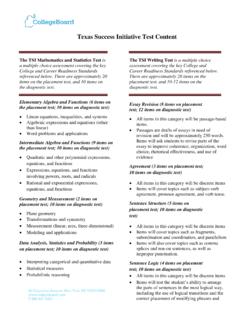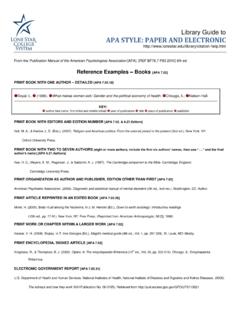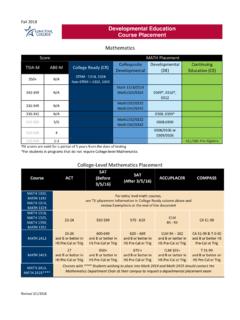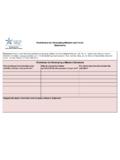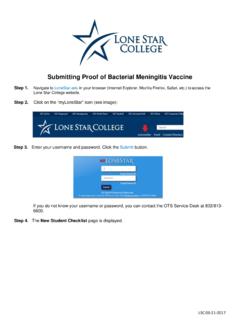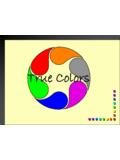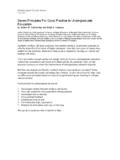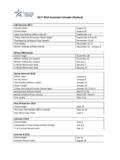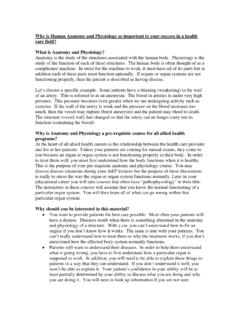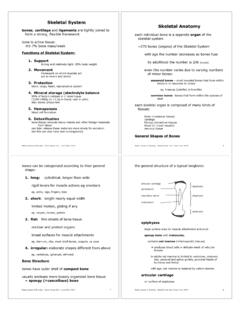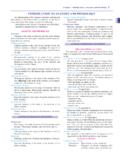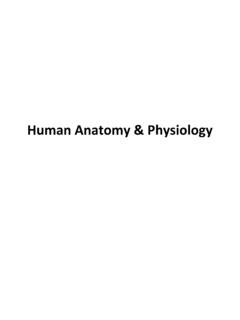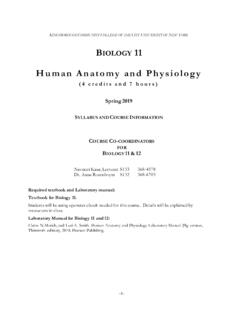Transcription of Human Anatomy and Physiology- I Lab Practical 1 …
1 1 Human Anatomy and physiology - I BIOL2401- Lab Practical 1 Terminology Lab 1: Lab Safety Lab 2: Terminology Body Cavities Dorsal cavity Ventral cavity cranial cavity thoracic cavity nasal cavity pleural cavity Oral cavity mediastinum + Orbital/optic cavity pericardial cavity vertebral cavity diaphragm + abdominopelvic cavity abdominal cavity pelvic cavity + not a cavity or membrane Abdominopelvic regions: Quadrants Regions right upper left upper right hypochondriac epigastric left hypochondriac right lower left lower right lumbar umbilical left lumbar right iliac hypogastric left iliac Body planes and sections sagittal (median) plane cross section frontal (coronal) plane midsagittal plane longitudinal section transverse (horizontal) parasagittal plane oblique section Surface Anatomy .
2 Cubital lumbar palmar sacral abdominal carpal digital mammary patellar sternal acromial celiac dorsum (dorsal) mental pectoral sural* antebrachial cephalic femoral nasal pedal tarsal antecubital cervical frontal occipital pelvic umbilical axillary costal genital oral perineal vertebral brachial coxal gluteal orbital/optic/ocular plantar buccal crural inguinal otic popliteal Lab 3: Chemistry Know the following terminologies Know the pH of the following body fluids Ions Blood pH 2 Electrolytes Gastric Juice pH pH Vaginal Secretions pH Acid Base Buffer Lab 4: The Compound Microscope parts: arm eyepiece (ocular lens) objective lenses (scan, low, high) base fine adjustment knob stage body mechanical stage substage disc coarse adjustment knob nosepiece substage lamp microscope use: total magnification + microscopic slide resolution* cover slip + be able to calculate the magnification of the image seen through the eyepiece on any power.
3 Lab 5: Cell Structure cell membrane flagella nucleus centrosome / centriole Golgi apparatus nuclear envelope cilia lysosome DNA cytoplasm mitochondria chromatin / chromosome endoplasmic reticulum nucleolus rough peroxisome smooth ribosome Lab 6: Movements through Cell Membranes diffusion osmosis filtration isotonic Benedicts (for glucose) hypertonic iodine test (for starch) crenation hypotonic lysis Lab 7: The Cell Cycle Interphase Mitosis Cytokinesis prophase metaphase chromatid anaphase centromere telophase spindle apparatus 1 parent cell 2 daughter cells Lab 8: Epithelial Tissues Be able to identify the following tissue types, their location in the body and function.
4 3 simple squamous simple columnar stratified squamous simple cuboidal pseudostratified columnar transitional Lab 9: Connective Tissues fibroblasts collagen elastic reticular Be able to identify the following types of tissues and cell types loose (areolar) bone (osseous) adipose hyaline cartilage osteocyte reticular chondrocyte blood (vascular) dense regular RBC WBC platelet Lab 10: Muscular and Nervous Tissues Be able to identify, locate, and state the function of the following muscle tissues skeletal cardiac smooth nervous tissues neurons neuroglia Lab 11: Major Organs Human Torso models; Rat Dissection Identify the following organs Heart Brain Spinal Cord Esophagus Stomach Small Intestine Large Intestine Larynx Trachea Lungs Testis Ovary Adrenal Glands Thyroid Glands Spleen Thymus Kidneys Urinary Bladder

